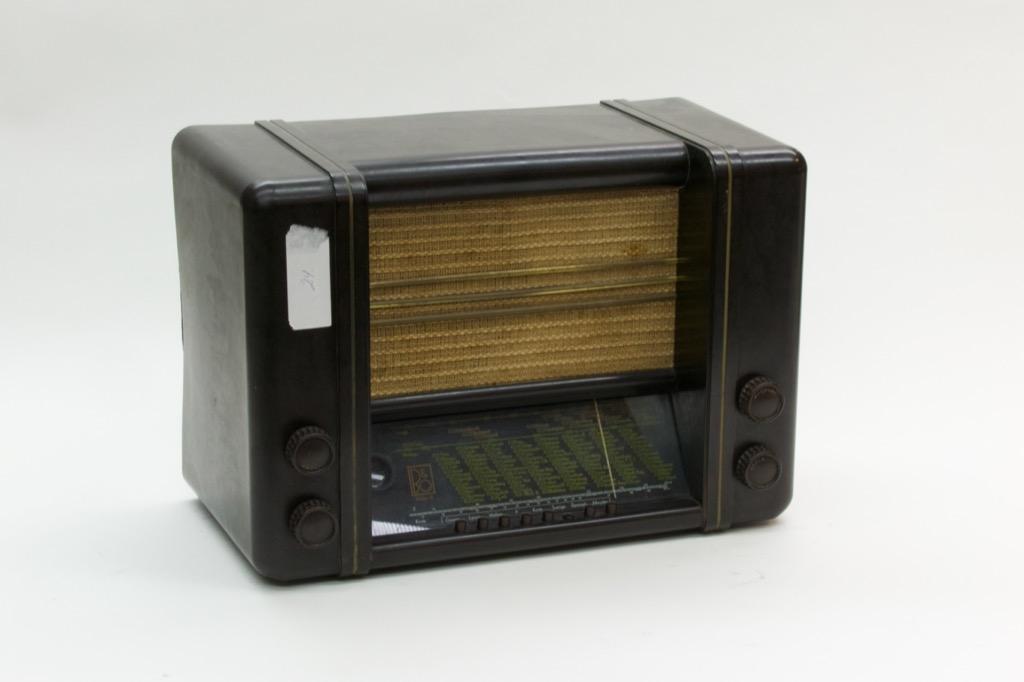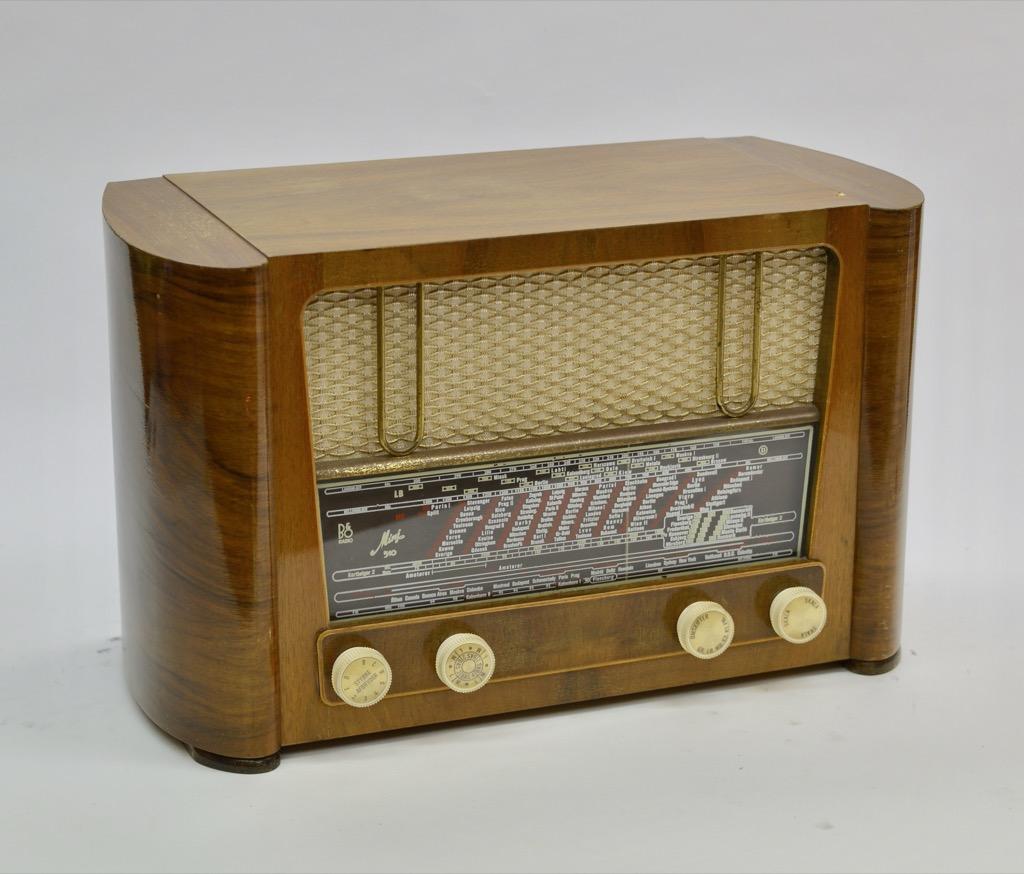Forum Replies Created
- AuthorPosts
-
The Line-in volume is significanlty lower than streamed music, I have the volume way past 50.
The level of a line-level signal is dependent on the relationship between the output level of the source device and the sensitivity of the input to which it’s connected. As a wise woman I know says: “it takes two to tango.”
This assumes that the output device has a maximum output level that is lower than or equal to the expected maximum input level of the downstream device. If the source device has a higher output than the expected, then you just get distortion, independent of the volume setting of the output device (because the signal gets clipped at its input, before the gain that’s implemented by the volume control).
I wrote a much longer and geekier explanation of this here
https://www.tonmeister.ca/wordpress/2021/05/07/turn-it-down-half-way/
with some extra related information here
https://www.tonmeister.ca/wordpress/2020/06/03/beolab-3rd-party-source-with-a-high-level-output/
Also, note that we can now assign the “Center” role to the Theatre’s Front and Left Front-Firing speakers. I’m interested to compare the difference with these added speakers.
Wait, how you do this? I have the beta app and the latest firmware and it still won’t let me do that.
Remember that, if you choose to do this, the Speaker Distances and Speaker Levels that you assign to multiple outputs with the same Speaker Role have a HUGE effect on the perceived result. This is also true with VERY small changes in parameters when the physical sources are close together.
In other words, don’t jump to conclusions about “how things sound” without playing around with the parameters significantly.
The most optimal situation is to be able to hear the mix as the mixing engineer heard it. However, this is not possible in many/most situations.
I originally designed the upmixing portion of the True Image processor with a rather simple aim:
- If you are sitting in the correct location (commonly called the “sweet spot” – although this is misleading) with a correctly-configured system, then upmixing with True Image should not change your perception of the mix, so it is redundant – or at least unnecessary.
- If you are NOT sitting in the correct location, then upmixing with True Image should help to deliver a perceived mix (primarily the spatial attributes) that is more like what you would hear in the correct location.
Note that the downmixing portion of True Image has a different purpose – but that’s not what we’re talking about. Note as well that this was my aim – real-world results may vary with different loudspeaker configurations, listening rooms, and mixes.
For example: If you play Suzanne Vega (or listen to the lead vocal in any pop tune) over a correct 2.0 stereo configuration, but you sit slightly to the right of centre, then you’ll hear the vocals on the right. If you upmix that track to a correctly-configured 5-channel output, then you’re more likely to hear the vocals in the centre loudspeaker.
The Dolby Atmos decoder in Beosound Theatre (just like all other consumer-level Dolby Atmos-compatible devices that I know of…) can decode/render a maximum of 7.1.4 channels. It is typically safe to assume (but it is an assumption) that a Dolby Atmos-encoded signal was monitored in 7.1.4 when they made the mix.* Note that this does not necessarily mean that the mix actually uses all of those channels. Some mixing engineers choose to omit some channels (by sending silence on them) for technical or artistic reasons.
Based on that assumption, it is also safe to assume that, if the mix was in 7.1.4, then upmixing it with additional output channels is unnecessary, since the reason to make any surround mix is to make the perceived spatial attributes in the mix more similar over a wider listening area. (For example, if you have one chair and no friends and a good 2.0 channel stereo system, you have no need of a centre loudspeaker because phantom imaging works very well…)
Finally, to come back to your earlier comment (maybe “complaint”? 🙂 ):
The Speaker Role options that were originally available in Beovision 11 -> Harmony were based on a master set of multichannel formats that never actually happened in consumer-level distribution. For example, in the early days of 7.1-channel signals, DTS had 7 different variants of layouts. Sony’s SDDS system supported 5 channels across the front and only 2 surround channels. Since the Speaker Roles had to be ready to support all of those channels in all possible then-future formats, the True Image upmixer was made to deliver them when they were not present at the input. For example, if you chose to build an SDDS configuration instead of a now-normal 7.x configuration, then True Image had to be compatible with that choice, and therefore it would create outputs appropriately. Since these format configurations never actually materialised in distribution media, there is no real need to continue supporting them with upmixing just for upmixing’s sake. As you said: more isn’t necessarily better – sometimes it’s just more.It’s important as well to separate the x.1.z vs. x.2.z vs. x.3.z difference from this, since that is a separate issue that is handled by bass management, not up/down-mixing.
* This may not be necessarily true for big-budget movies, since Atmos-compatible cinema systems can support up to 24.1.10 channels, which might actually be present in a large-scale re-recording theatre.
Is there a place where I can find what value to assign to a Beolab 2 connected via Receiver 1 for the Redirection Level?I could find this out once I get back to work after the holidays – but in order to calculate this, I/you would need to know all of the loudspeakers in the Listening Position, and their individual Speaker Roles. Send me a DM over Beoworld in the first week of January.https://www.vinylengine.com/library/bang-and-olufsen/mmc-10.shtml
I believe that the 10E was a 20E for the US market – but I might be wrong…
No worries! I found this one out for myself when I connected a pair of H95s to the output of a refurbished Beogram turntable (I was checking a prototype of the RIAA preamp that we put in the 4000c series).
I wasn’t listening to distorted audio for long before the headphones turned themselves off. That was when I realised what should have been obvious – the new RIAA can output about 7 V peak, and the headphones are designed for a 1 V RMS (or 2 V RMS? I can’t remember…) (therefore 1.4 Vp (or 2.8 Vp)). The poor things were just trying to protect themselves from my abuse… 😀
It’s just a guess, but it sounds to me like you’re overloading the input of the H95s. If the input signal is high enough, it will cause the headphones to shut down to protect themselves.
Try turning down the volume on the Beomaster 5500 and see if this helps.
I’ll certainly pass that one on!
However, remember that if you’re using a single source (e.g. an Apple TV) with multiple streams / apps, then a source-based gain offset will not help – however, this is already true on an Eclipse/Harmony for example, as you probably already know.
@Geoff, Please do listen to what your real-world users are reporting.
I can absolutely assure you that I do – even when I don’t directly respond here. 🙂
With respect to the question of the volume setting, please remember that a 1:1 swap of a Beovision Something to a Beosound Theatre doesn’t mean that all other things are equal. For example, it’s quite possible that the switch from a 5.1 or 7.1 Dolby Digital-encoded stream to a Dolby Atmos-encoded stream, may not necessarily have the same levels or identical metadata.
It is also possible that Theatre’s automated setup resulted in different values for the Speaker Levels settings than was the case in the television it replaced.
And of course, there are other things that change, including the total number of loudspeakers and outputs.
I should have been more specific in my first response:
when fed identical input signals on a single input channel fed to a single output channel, with all other parameters being default or equal, then the Beosound Theatre will have the same output as a Beovision television or a Beolab loudspeaker. However, any changes in (for example) the Speaker Levels, adjustment parameters, numbers of outputs, or input signals will have a resultant effect on the total perceived output level.Sometimes, this can be very tricky/deceiving. For example, if you connect an Apple TV to a Beovision Harmony and play BTS / Coldplay performing “My Universe” using the Tidal app, then the result will be about 12 dB louder than if you do exactly the same thing with a Beovision Theatre instead. The reason for this is that the Harmony (which does not support Atmos decoding) will play the 2.0 PCM mix. The Theatre will play the Atmos-encoded mix of the same track, which is mixed considerably quieter. The only VISIBLE way to see this difference is to look at the Sound Info on the two products.
Cheers
-geoff
Typically, what volume are you all using through the LG TV (obviously depends) but I am fairly close with the volume at 43-46 and the dialogue is pretty weak. A character also knocked on a door with the scene on the inside and the knock was barely audible. Other elements are fine such as action, score etc. I checked the app and the position is correct and sound setting on movie.
The sensitivity (the relationship between the levels of the input and the output signals) of the Beosound Theatre is the same as all other Beovision televisions (until the internal protection algorithms kick in). So, if you’re playing the same mix of the same input signal, then Volume Step 42 will deliver the same output level as on an Eclipse / Harmony / Beovision 11.
Of course, this assumes that all other parameters are identical, which won’t make sense in most cases. (For example, I doubt that many persons will configure their Theatre to output only L / C / R as on an Eclipse.)
You’re welcome! But I only deserve a very small percentage of the credit. A hockey team is more than its goalie. 😉
But I’ll pass the comments on in my next meeting with the gang.
cheers
-geoffDon’t confuse low frequency cutoff with bass capability.
The first is a measure of how low in frequency a loudspeaker can play at a “normal” listening level.
The second is a measure of how loudly the loudspeaker can play low-frequency content.
For example, any 1″ tweeter can play signals down to 10 Hz – but it can’t do it loudly.
Hi,
You’re correct – the number of available OUTPUT speaker roles has been reduced.
The ones that have “disappeared” are
- Left Wide / Right Wide
- Centre Back
- Center Height
- Ceiling
There has been a slight change in names amongst the rest:
- Left Height is now called Left Front Height
- Right Height is now called Right Front Height
Sorry. Just dropped in…
@KolfMAKER: I see that you already got the correct link to the Beogram TGS. No need for me to help there.
@matador: Yes and Yes on the two LP covers. I’ll ask if it’s okay to upload a scan of the leaflet that’s included with the black-covered disk. I won’t translate it, though… 😀Hmmm… my assumption about the “B” designation and your comment made me do a little more digging. We might both be wrong.. For example:
Here’s the Master 41-B “Klangbund” in Bakelite:

But this is a Mini 510-B – definitely not Bakelite…

I’ll have to check tomorrow, but I think that one of the “Byggemøbler” components is a Type Grand Prix 606 B” which is, of course, wood.
I’m starting to think that B stands for many things. Too bad I can’t find a “A”, which would make the task simpler… 😀
Martin to the rescue! Mange tak!
Mvh
-geoffHi,
> The Wide role is possible for the Theatre’s internal speakers
This is not correct. The side-firing OR the “wide” virtual outputs can be assigned to have any speaker role, but a “wide” speaker role is not one of those options.
I realise that there may be some confusion caused by the naming of the virtual outputs as “wide” instead of “surround”, however, this was done so to overlap of the input channels’s names (the Speaker Roles) with the output channels’. You can blame me for this.
If you are placing external loudspeakers next to the Theatre (near the optimal locations for the Left Front and Right Front loudspeakers), then I would recommend that they be given these roles, and that you either choose the Centre output only for the Centre Front Speaker Role, OR use all three front-firing outputs for Cf (with some tweaking of Speaker Distances and Speaker Levels to pull things inwards a little as described in this article)
If they really are out farther (say in the region of ±60º instead of ±30º) then I would recommend setting them to Left Surround and Right Surround roles, but lying to the Theatre and telling it that these are slightly closer than they actually are. Duplicating the roles with the actual Surround loudspeakers will help to tie things together, but lying about the distance will help to pull the image back slightly.
It may be counter-intuitive, but if your input is primarily 5.0 or less, then (I know I know… it’s weird…) it is worth trying setting the loudspeakers in your “wide” locations to have “Back” speaker roles. It might not work – and it certainly won’t for 7.x.y materials – but for upmixing it isn’t necessarily a crazy idea.
I’ve done a similar setup where I had an Eclipse and two Beolab 50s as a front “3.0” system where I set the internal outputs of the Eclipse to play (from left to right): Left Surround, Centre Front, Right Surround (and the 50s playing the Left Front & Right Front, of course…) This worked well.
Hmmm… there’s a mixture of errors and truths here.
Atmos is not a CODEC. (CODEC stands for COmpression-DECompression and is the method by which the audio is encoded and decoded, regardless of which channel it is and how many channels there are. For example, MP3, LPCM, Ogg Vorbis, FLAC, and AC-3 are all CODECs.) A signal that is being sent/received as Atmos will be encoded in a CODEC, depending on the source and the transmission medium. (for example, a Blu-ray connected to a receiver with an HDMI cable may use a different CODEC than a network-based streaming receiver connected to the same receiver with another HDMI cable…)
Atmos isn’t strictly “metadata”, although it can contain metadata that may or may not be applicable to your immediate playback situation.
With Beosound Stage (or Theatre), the most channels you can get from an incoming signal on HDMI are 7.1 with LPCM or 7.1.4 with Atmos. So, if you have set up the system so that the Stage (or Theatre) is receiving PCM (say, because the SOURCE has been set to decode the Atmos stream and convert it to PCM before shipping it out on an HDMI output), then the height channels will be folded (downmixed) into the “main” channels in a downmix from 7.1.4 to 7.1 (assuming that the original signal’s mix contains information on the height channels, which is not always the case). (Note that upmixing and downmixing are NOT part of Atmos, but in most devices, they ARE part of the Dolby processing that can be applied to an Atmos signal.)
I’ve tried to explain this in more detail here.
Cheers
-geoffOops… found another one. Black sleeve from 1975 with a cartoon-ish drawing of a Beogram 4002 tonearm on it. It’s called “Platespillerkurs” – but it’s a course on a vinyl record with an insert – in Norwegian. I guess it was for the dealers to learn about turntables.
A funny thing is that a lot of the information presented in the insert is identical to the stuff in the Beogram 4000c Technical Sound Guide. Then again, not much has changed in 50 years… 😀
I have a couple of these here in the archive in Struer – but I’ve never seen a letter – probably because the ones I have at my desk weren’t from a dealer.
There’s also one from 1980/81 in a white sleeve (issues by Philips for B&O) as well.
Cheers
-geoff - AuthorPosts
